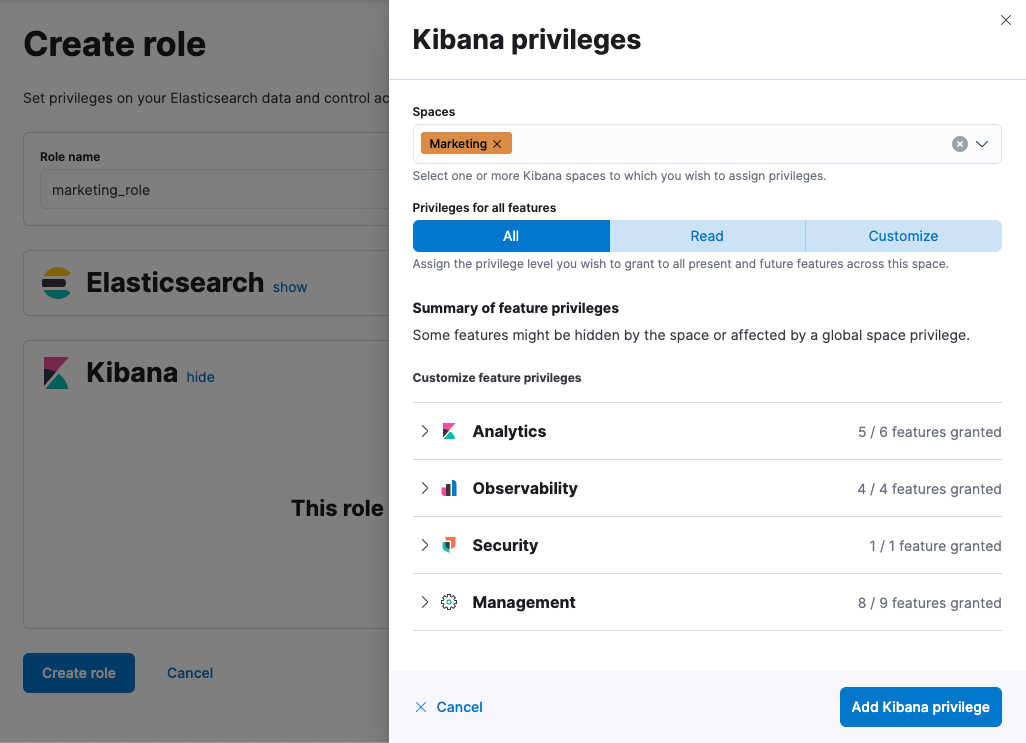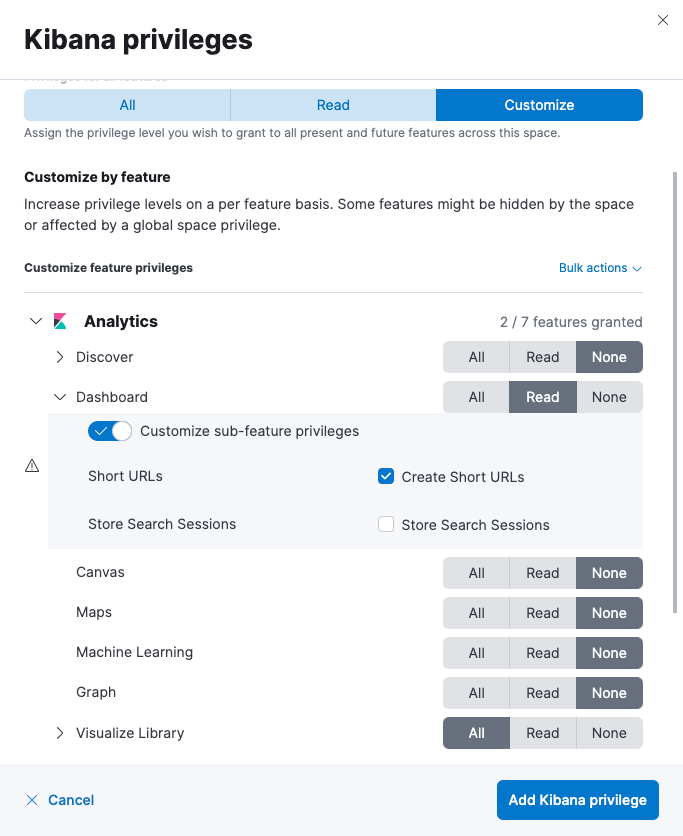- Kibana Guide: other versions:
- What is Kibana?
- What’s new in 8.7
- Kibana concepts
- Quick start
- Set up
- Install Kibana
- Configure Kibana
- Alerting and action settings
- APM settings
- Banners settings
- Enterprise Search settings
- Fleet settings
- i18n settings
- Logging settings
- Logs settings
- Metrics settings
- Monitoring settings
- Reporting settings
- Search sessions settings
- Secure settings
- Security settings
- Spaces settings
- Task Manager settings
- Telemetry settings
- URL drilldown settings
- Start and stop Kibana
- Access Kibana
- Securing access to Kibana
- Add data
- Upgrade Kibana
- Configure security
- Configure reporting
- Configure logging
- Configure monitoring
- Command line tools
- Production considerations
- Discover
- Dashboard and visualizations
- Canvas
- Maps
- Build a map to compare metrics by country or region
- Track, visualize, and alert on assets in real time
- Map custom regions with reverse geocoding
- Heat map layer
- Tile layer
- Vector layer
- Plot big data
- Search geographic data
- Configure map settings
- Connect to Elastic Maps Service
- Import geospatial data
- Troubleshoot
- Reporting and sharing
- Machine learning
- Graph
- Alerting
- Observability
- APM
- Security
- Dev Tools
- Fleet
- Osquery
- Stack Monitoring
- Stack Management
- REST API
- Get features API
- Kibana spaces APIs
- Kibana role management APIs
- User session management APIs
- Saved objects APIs
- Data views API
- Index patterns APIs
- Alerting APIs
- Action and connector APIs
- Cases APIs
- Add comment
- Create case
- Delete cases
- Delete comments
- Find case activity
- Find cases
- Find connectors
- Get alerts
- Get case activity
- Get case
- Get case status
- Get cases by alert
- Get comments
- Get configuration
- Get reporters
- Get tags
- Push case
- Set configuration
- Update cases
- Update comment
- Update configuration
- Import and export dashboard APIs
- Logstash configuration management APIs
- Machine learning APIs
- Osquery manager API
- Short URLs APIs
- Get Task Manager health
- Upgrade assistant APIs
- Kibana plugins
- Troubleshooting
- Accessibility
- Release notes
- Developer guide
IMPORTANT: No additional bug fixes or documentation updates
will be released for this version. For the latest information, see the
current release documentation.
Kibana privileges
editKibana privileges
editKibana privileges grant users access to features within Kibana. Roles have privileges to determine whether users have write or read access.
Base privileges
editAssigning a base privilege grants access to all Kibana features, such as Discover, Dashboard, Visualize Library, and Canvas.
Assigning base privileges
editFrom the role management screen:

From the role management API:
PUT /api/security/role/my_kibana_role { "elasticsearch": { "cluster" : [ ], "indices" : [ ] }, "kibana": [ { "base": ["all"], "feature": {}, "spaces": ["marketing"] } ] }
Feature privileges
editAssigning a feature privilege grants access to a specific feature.
-
all - Grants full read-write access.
-
read - Grants read-only access.
Sub-feature privileges
editSome features allow for finer access control than the all and read privileges.
This additional level of control is a subscription feature.
Assigning feature privileges
editFrom the role management screen:

From the role management API:
PUT /api/security/role/my_kibana_role { "elasticsearch": { "cluster" : [ ], "indices" : [ ] }, "kibana": [ { "base": [], "feature": { "visualize": ["all"], "dashboard": ["read", "url_create"] }, "spaces": ["marketing"] } ] }
On this page
Was this helpful?
Thank you for your feedback.